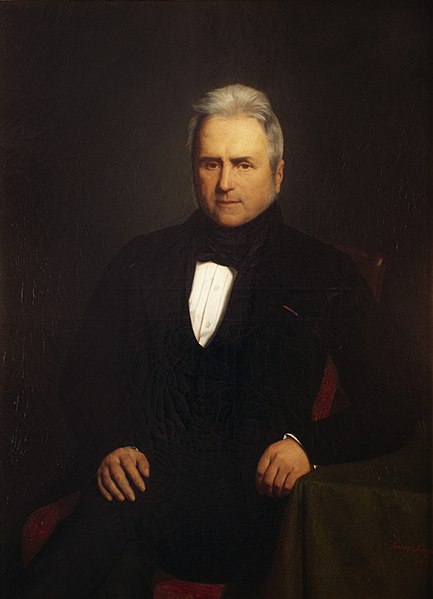Jacques Laffitte was a leading French banker, governor of the Bank of France (1814–1820) and liberal member of the Chamber of Deputies during the Bourbon Restoration and July Monarchy. He was an important figure in the development of new banking techniques during the early stages of industrialization in France. In politics, he played a decisive role during the Revolution of 1830 that brought Louis-Philippe, the duc d'Orléans, to the throne, replacing the unpopular Bourbon king Charles X.
Jacques Laffitte
The July Monarchy, officially the Kingdom of France, was a liberal constitutional monarchy in France under Louis Philippe I, starting on 26 July 1830, with the July Revolution of 1830, and ending 23 February 1848, with the Revolution of 1848. It marks the end of the Bourbon Restoration (1814–1830). It began with the overthrow of the conservative government of Charles X, the last king of the main line House of Bourbon.
Louis-Philippe I, King of the French. The King is depicted at the entrance of the Gallerie des batailles which he had furnished in the Château de Versailles.
Liberty Leading the People (1830) by Eugène Delacroix commemorates the July Revolution of 1830. The child with two pistols to the right of Liberty (who holds the tricolor flag) would be Victor Hugo's inspiration for Gavroche in Les Misérables.[citation needed]
Silver five-franc coin featuring Louis Philippe
Donjon of the Château de Vincennes, where Charles X's ministers were detained





